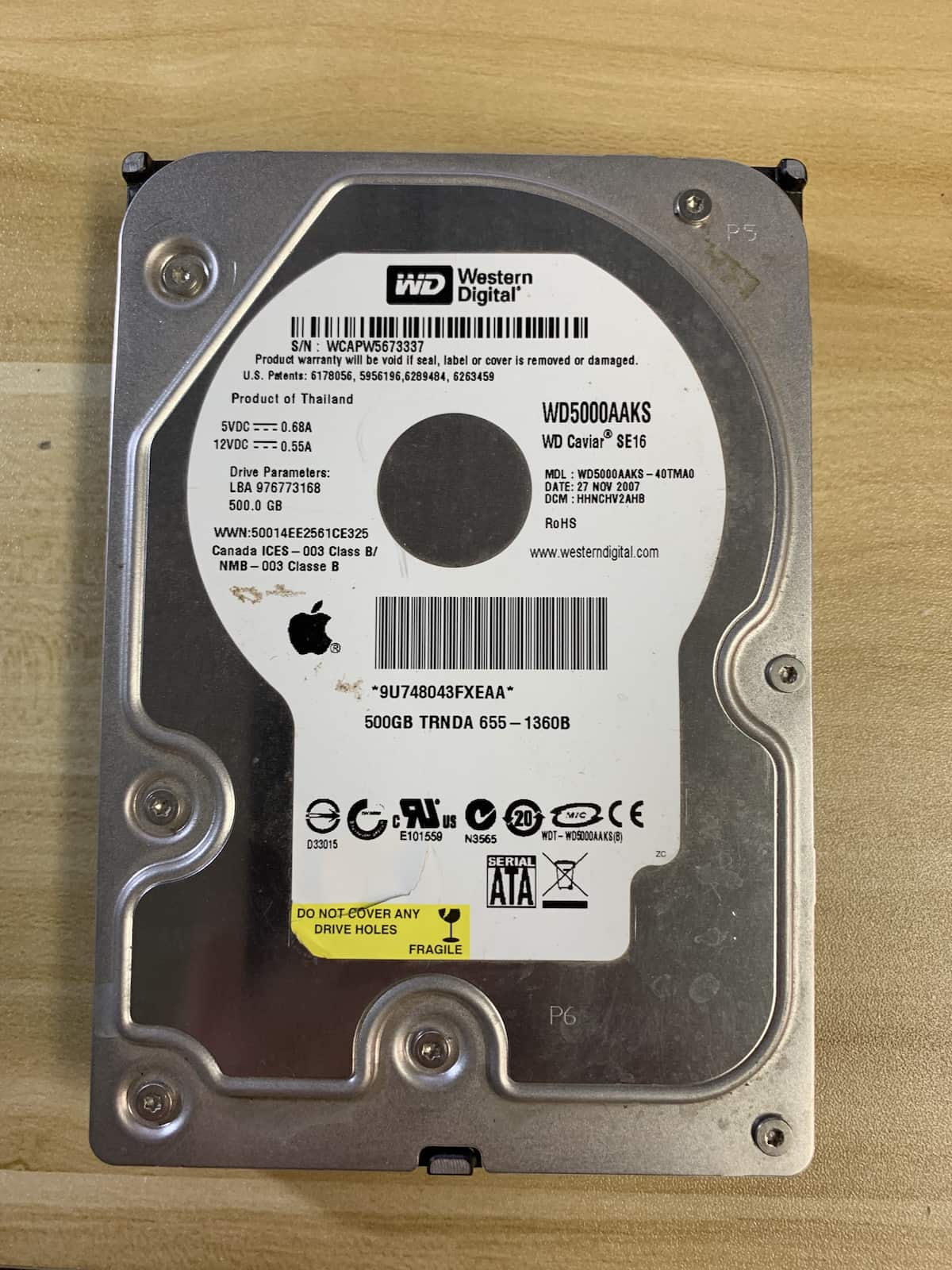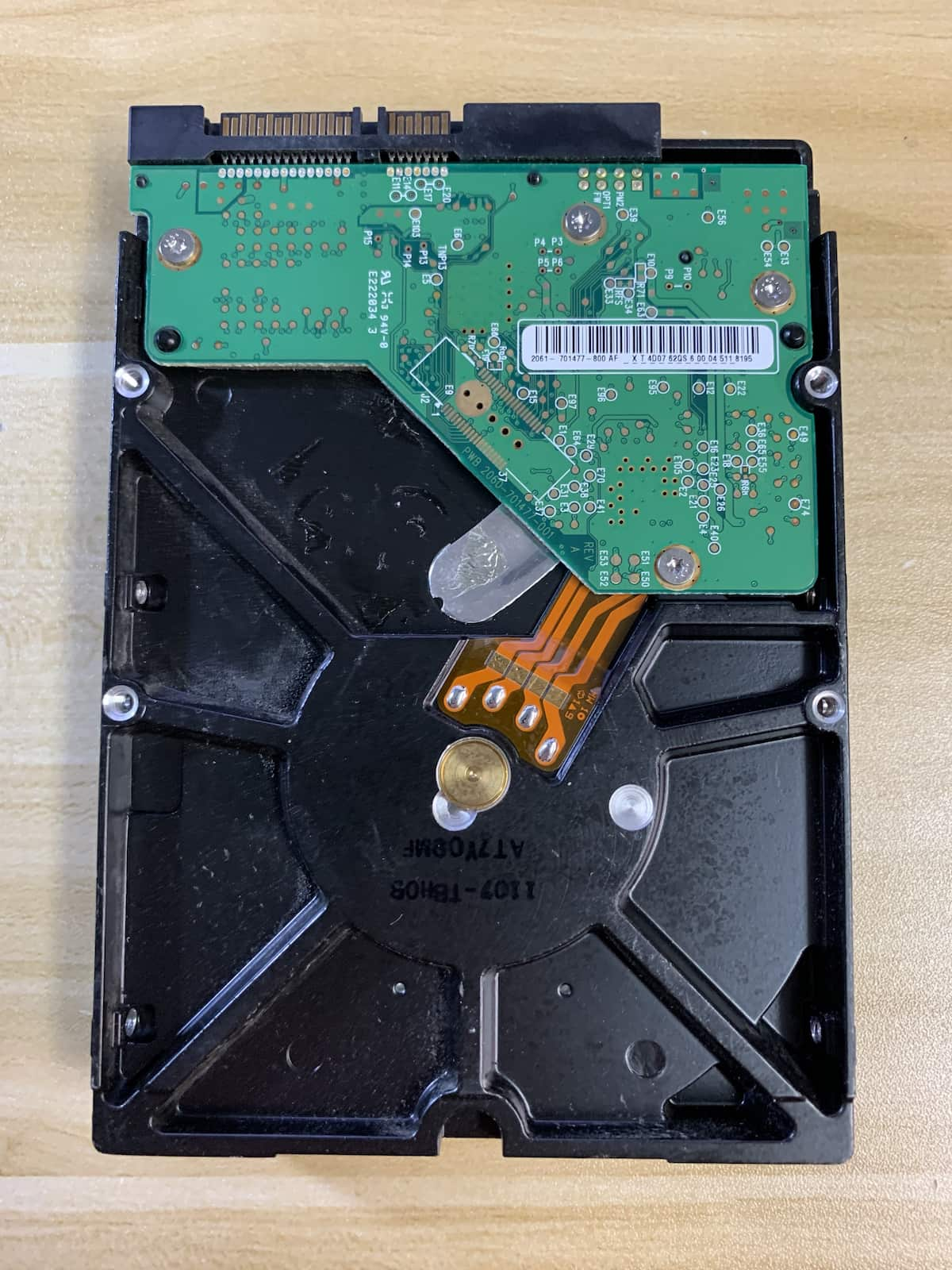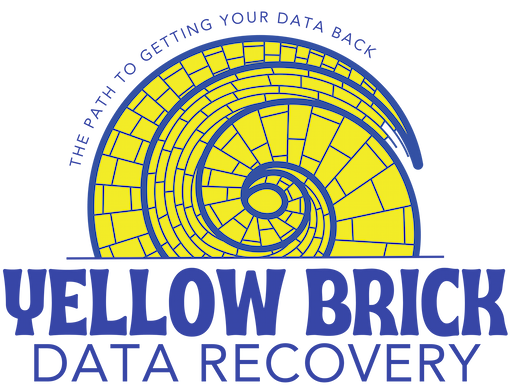This WD5000AAKS model hard drive came into us from California with the symptom being listed as the drive just stopped working out of the blue. It is an older drive from 2007 (can you believe it has been 15 years already?), so age-related issues will not be a surprise during this project.


Diagnosing the WD5000AAKS hard drive
The first step was to open the hard drive up and complete a visual inspection in the cleanroom. Everything looked pretty good physically, so I connected the drive up to the PC-3000 to continue with the diagnosis.
Firmware modules 32, 34, 21, and 22 were all bad. As you may remember me covering elsewhere on this blog, bad module 32 is a common issue with these drives, but in this case, it feels like the issue might be more than just firmware. I believe the issue is likely failing heads and possibly too many bad sectors in the firmware area of the drive to be able to repair the firmware issues as I usually would.
I ordered a donor drive to use for a head swap, and wait for it to arrive. The compatible donor I used was WD5000AAKS-00TMA0. Once the donor arrived I installed the replacement heads and while I could get farther than before, I still could not clear the module 32 issue.
It is rare for a drive to require it, but I went ahead and moved Module 32, then wrote the contents for module 32 using the donor drive (a good module 32 copy). That finally allowed me to have access to the sectors on the drive!
WD5000AAKS Imaging Process
I started by imaging one head at a time. I was able to get all but 2 of the heads imaged that way. The two heads that were left read in some areas, but in most, I wasn’t able to get data. Sometimes a head stack can fail during recovery, so I went ahead and ordered another donor just to swap the heads and try again.
After the second head swap, I still wasn’t getting much data under those two heads. This leads me to believe that portions of the drive were starting to go bad, and no amount of head swaps or imaging passes were going to get these bad areas.
I was able to image over 90% of the bad drive, so I continued onto the software data recovery stage to see what data was in those recovered sectors.
Recovering The Data
Unfortunately, a big part of the 10% I was not able to get on the drive was at the beginning of the drive. This means that the data about folder structure and file names were not fully recovered. In fact, most of the data I was able to get did not come back with any kind of file name or folder structure.
The good news is that the most important files on the drive were photos. Most of the time the folder structure and file names are not as important as the photos themselves, and for this recovery, that was the case!
The client was pleased to get back all the data we were able to recover. Due to the multiple head swaps, it took 13 days to complete this recovery. This was one of the longer recoveries we have completed in a while! Most of the time we are able to complete a recovery project in 2-5 days.
Get Your WD5000AAKS Recovered
Do you have a Western Digital WD5000AAKS hard drive that you need to recover? Usually, these drives don’t require a lab recovery like the one in this case study, and usually, the issues are just firmware related! We can help you get your data back from your WD5000AAKS, or from any hard drive that you need files recovered from.
If you would like to start the process of recovering your data through us, please fill out our data recovery form. If you would like to get a quote before you start the recovery process, just fill out my quick quote form and I will get back to you with what I believe the drive will require to recover.
Thanks for reading!
Drive info: Western Digital, WD5000AAKS, WD Caviar SE16, MDL: WD5000AAKS – 40TMA0, DATE: 27 NOV 2007, DCM: HHNCHV2AHB, WWN:50014EE2561CE325, 500GB TRNDA 655 – 1360B
